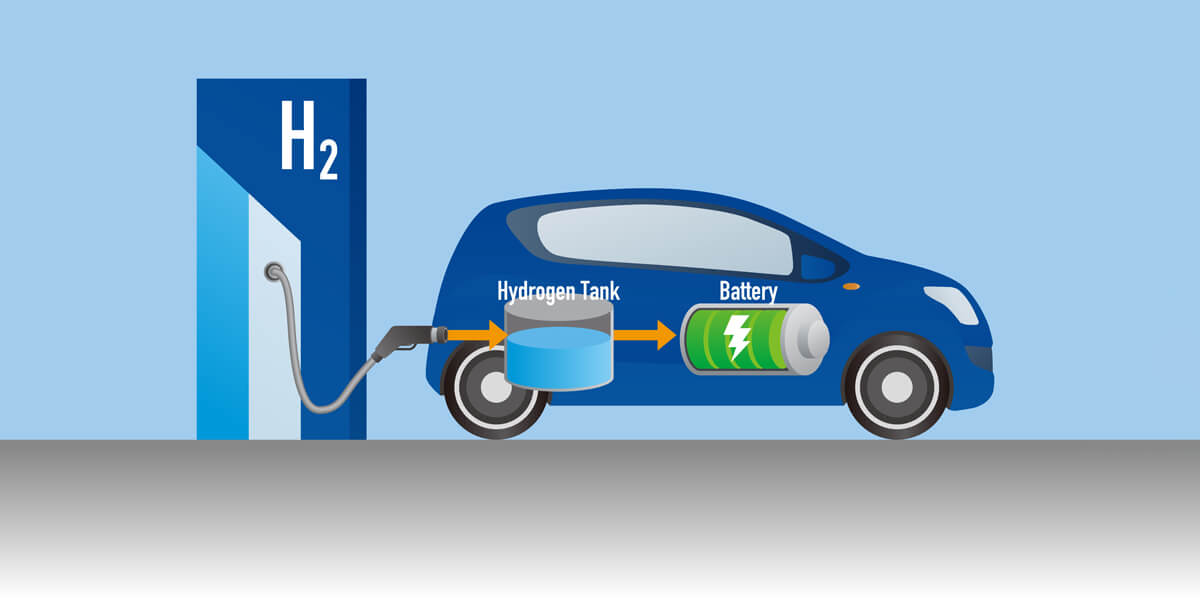India has an ambitious target toward an aspirational climate goal of Net Zero emissions by 2070. “Nevertheless, the country is demonstrating a strong dedication to its goal by drawing significant investments into the renewable energy sector.”
Indian mobility is one such sector that is leading the country’s Net Zero emission target in a proactive manner. This is because the Indian transport sector is the third-largest greenhouse gas (GHG) emitting sector in the country, accounting for 14% of energy-related emissions, according to a City Fix report.
Moreover, if we look beyond climate and sustainability, ZEVs, by virtue of their technology, are better vehicles to drive for individual customers, commercial fleets, and other form factors of ZEVs.
Considering the vastness of the world’s environmental challenges today, all contributions toward increased sustainability in mobility are worth exploring today.
The figure below illustrates, how the current ZEV industry structure looks like:
Related reading: Electric vehicle charging- Emerging technologies and leading companies to watch for
Though batteries and hydrogen fuel cells are both capable of delivering the appropriate level of efficiency, technically and economically, there is a maturity gap between the two technologies. While hydrogen mobility is still in its infancy, the EV market has taken off in recent years in India. The country is targeting to achieve 30% electric vehicle penetration by 2030.
With electric mobility picking up pace, it has become crucial to monitor that the net zero emission initiatives are executed at each level of the value chain of electric mobility, especially the upstream, as the current electricity mix in India is carbon-intensive. The coal-based power plants in India contribute around 72% of the electricity generation.
Therefore, it is critical to scale up electricity from renewables, like solar, wind, hydro, and geothermal power, and India is making all efforts to scale its electricity generation through these sources. According to the government report, the country has the fastest-growing Renewable Energy capacity in the world.
However, even after such conscious efforts, the electricity produced from these renewable sources is temporarily constrained, as far as mobility is concerned amid transportation difficulties to long distances consumption points.
The above-mentioned facts indicate that it is challenging to achieve a net-zero emissions target with the electric mobility value chain in the near future. Therefore, whether hydrogen mobility can be considered an alternative to electric mobility is a global concern.
Hydrogen fuel cell technology
Broadly speaking, a fuel cell is an electrochemical reactor involved in the conversion of chemical energy of a fuel and an oxidant directly into electricity. In the case of a Hydrogen Fuel Cell, Hydrogen is used as the basic fuel, but the cell also needs oxygen to work. In Hydrogen fuel cells, electricity is generated using a chemical reaction. Each fuel cell has two electrodes: a negative anode and a positive cathode. The two electrodes are separated by an electrolyte, which acts as a filter to stop the cell reactants from directly mixing with one another and control the movement of charged ions created during the electrochemical reaction.
Does hydrogen production count-up carbon emissions?
Currently, around half of the world’s industrial hydrogen comes from natural gas (methane) and is used for fertilizers, as well as in the iron, steel, and space industries. However, the traditional method of steam methane reforming (SMR) of extracting hydrogen from natural gas also creates around 10 tons of CO2 for every ton of hydrogen produced.
However, another method of hydrogen production is through electrolysis, which involves the splitting of water molecules into hydrogen and oxygen using an electric current. This process can use renewable energy sources, such as wind or solar power, to generate the electricity needed for electrolysis, resulting in “green” hydrogen produced without any carbon emissions. However, electrolysis is currently more expensive than SMR and requires a significant amount of electricity.
Hydrogen transportation; an onerous job
The transportation of hydrogen for fuel cell vehicles in India is still at an infant stage. However, the government and private companies are investing in the development of hydrogen infrastructure, including the production, storage, and transportation of hydrogen, to increase the range and usability of fuel cell vehicles.
Hydrogen can be transported in compressed gas form, either through pipelines or in high-pressure tanks.
The transportation of hydrogen through pipelines requires specialized infrastructure and high-pressure compressors and is currently not widespread in India.
On the other hand, transportation through high-pressure tanks via trucks is still in the early stages of development. However, it is the most common method used across the globe. The transportation of hydrogen via truck requires specialized equipment and safety measures to prevent accidents, as hydrogen is a highly flammable gas.
A synoptic comparison of electric mobility V/s hydrogen mobility in India
Takeaways from the above comparison:
- Hydrogen-powered vehicles are currently four times higher than EVs. However, it offers double the range of electric vehicles.
- Re-fueling time of hydrogen-powered vehicles is 1/4th of an electric vehicle.
- Infrastructure costs for hydrogen fueling stations and storage costs of Hydrogen are immensely expensive when compared to electric mobility infrastructure.
Conclusion:
Though hydrogen mobility seems to be extraordinarily expensive, it is still at a very nascent stage. And currently, the visibility of its maturity, even with hypothetical statistics, is very blurry. Hence, comparing the two technologies in the current scenario can’t really decide which one is the best fit for decarbonization.
However, a white paper from Quantron suggests that both technologies (Electric and Hydrogen Mobility) are likely to complement each other in the future. For instance, with limited loads and daily range requirements, electric mobility would be a favored solution. On the other hand, for a heavy goods long-haul transport use case, hydrogen mobility could be a more optimal solution from a system perspective as it will have better range and less refueling time against electric mobility.
Hydrogen mobility in India is still very ambiguous. However, the Indian government has recently started promoting the use of hydrogen fuel cell vehicles (HFCVs) and announced plans to build a network of hydrogen fueling stations across the country. Also, some automakers, such as Hyundai and Toyota, have announced their plans to introduce hydrogen fuel cell vehicles in India in the coming years.
If you are interested in discovering how Netscribes can assist you with cutting-edge technology insights and automotive market research services to help you make informed decisions, please feel free to contact us.
Based on insights by Pranjal Markale, Assistant Manager (Lead Analyst), Auto sector, Netscribes






